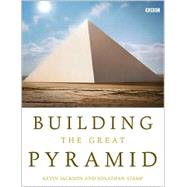
Note: Supplemental materials are not guaranteed with Rental or Used book purchases.
Purchase Benefits
Kevin Jackson is a freelance journalist and film-maker. He has written, directed and narrated documentaries on Anthony Burgess, Dennis Potter and William Morris for BBC television. His books include The Language of Cinema and A Ruskin Alphabet.
Jonathan Stamp is the producer of the BBC television program Pyramid.
| Introduction: Wonderful Things | p. 7 |
| The Pyramid and Its Site | p. 17 |
| A Conscript's Life | p. 31 |
| Building the Great Pyramid | p. 49 |
| Worlds Within and Without | p. 71 |
| Death, Afterlife and the Funeral of the King | p. 91 |
| Travelers' Tales | p. 109 |
| The Origins of Modern Egyptology | p. 129 |
| Egyptology Comes of Age | p. 149 |
| Pyramidology, Heretics, Mystics and Cranks | p. 159 |
| Glossary | p. 182 |
| Further reading | p. 186 |
| Index | p. 188 |
| Picture credits | p. 192 |
| Table of Contents provided by Syndetics. All Rights Reserved. |
The New copy of this book will include any supplemental materials advertised. Please check the title of the book to determine if it should include any access cards, study guides, lab manuals, CDs, etc.
The Used, Rental and eBook copies of this book are not guaranteed to include any supplemental materials. Typically, only the book itself is included. This is true even if the title states it includes any access cards, study guides, lab manuals, CDs, etc.